Fix: Word could not create the work file. Check the temp environment variable.
The error message “Word could not create the work file. Check the temp environment variable,” occurs when a user is saving, opening, or previewing a Word document. This indicates that the temp environment variable was either added incorrectly or not present from the beginning.
The main cause of this error message is corrupted or incorrectly located temporary internet files. If this is the case, then MS Word will not be able to process them, and hence your documents will not be saved or opened.

To solve this issue, first, you can easily change the location of the temporary internet files to C:\Users\(Your Username)\AppData\Local\Microsoft\Windows\INetCache. Replace (Your Username) with the one you have on your PC.
Secondly, users can repair corrupt files by running the SFC and CHKDSK scans.
This also occurs when a user installs 64-bit Office and then uninstalls it to install the 32-bit version. Therefore, it is recommended to keep 64-bit MS Office on 64-bit Windows.
That being said, there are a total of 8 fixes for this problem, and all of them guarantee the complete elimination of this error.
1. Run the SFC and CHKDSK scans.
The SFC command will conduct a thorough scan of your PC, searching for any corrupt or faulty files to repair or replace them. This process occurs automatically, so users simply need to execute the command.
Similarly, the CHKDSK (Check Disk) command will scan your SSDs and hard drives to enhance their performance. Essentially, it will repair the bad sectors on the hard disks that might be causing the “Word could not create the work file” error.
Here is how to run the SFC and CHKDSK scans:
- Type CMD in the Windows search bar.
- Select Run as Administrator below the command prompt.
- Now press Enter after typing:
sfc/scannow

- Wait for the scan to complete.
- Afterward, press Enter again after typing:
chkdsk C: /f

- This will scan your C drive. For other disks, just replace the ‘C‘ with their corresponding letter.
- Open the Word file after the scan is complete.
2. Add a new environment variable.
Environment variables are specific values that play an important role in running any program. These variables store data used by these programs and determine how a process operates on your operating system. They are also responsible for locating the storage location for temporary files.
Therefore, if there is something wrong with the environment variables, the document files will neither open nor save. In this case, you should add a new environment variable, and here is how to do that:
- Open ‘Run‘ by pressing the ‘Win‘ + ‘R‘ keys simultaneously.
- Click OK after typing: sysdm.cpl
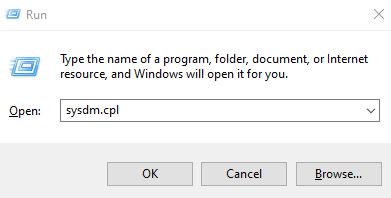
- Navigate to Advanced > Environment Variables.
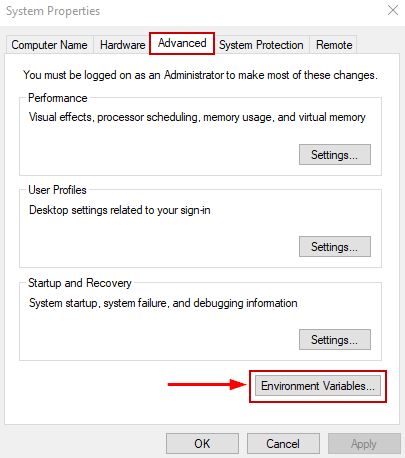
- Click New in the User Variables section.

- Next to the Variable name, type: %userprofile%
- Next to Variable value, type: C:\Users\”username” (Replace “username” with your username on the computer)

- Click OK to add the new environment variable.
- Restart your PC or laptop and try to open or save a Word file now.
3. Create a temporary internet files folder.
The temporary internet files folder also serves as a cache folder, where temporary work files are stored while using Microsoft Word. If the folder goes missing by any chance, it is evident that Word will not be able to save the files, resulting in the “Word could not create the work file” error.
Here’s how you can create a temporary Internet files folder:
- Run the Command Prompt as an administrator.
- Hit Enter after typing the following commands sequentially:
cd /d %USERPROFILE%\AppData\Local\Microsoft\Windows\INetCache
MD Content.Word

Note: In this case, the Content.Word folder was already present. However, if it had not been, this command would have created a new one.
- Restart your PC and access the Word documents now, without any problem.
4. Change the location of temporary internet files.
Setting the correct location for the temporary internet files is necessary; otherwise, Word cannot locate them and will display the work file error.
Fortunately, the steps for this method are pretty straightforward, as follows:
- Open Run with Win + R and type: inetcpl.cpl
- Click on OK to open the Internet Properties menu.
- Click on Settings under the Browsing history section in the General tab.
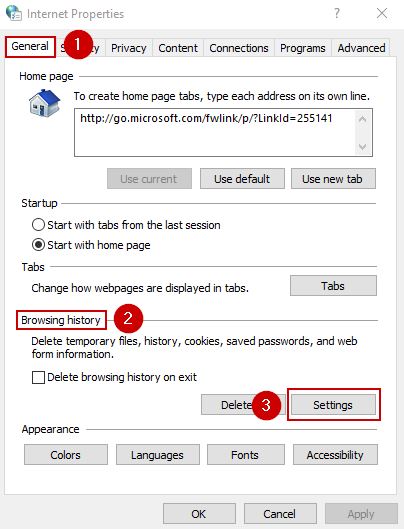
- Now, the Website Data Settings dialog box will open.
- Click on Move folder in the Temporary Internet Files tab.

- Navigate to C:\Users\”user name”\AppData\Local\Microsoft\Windows in the Browse for folder window. Here “username” will be replaced by your username folder.
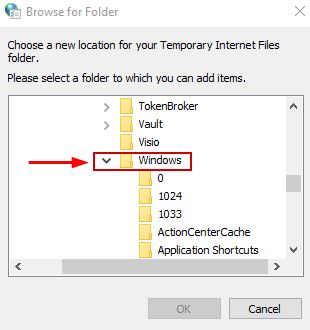
- Expand the Windows folder and click on INetCache to select this location.

- Click on OK and exit the settings.
- Restart your computer and the error will be gone now.
5. Increase the disk space for temporary Internet files.
Low disk space for temporary internet files is sometimes insufficient, causing MS Word to be unable to create the work files. To resolve this issue, users simply need to increase the disk space in the Internet Explorer settings.
Go through the following steps for this method:
- Open Run and type: inetcpl.cpl

- Click OK.
- In the General tab, select the Settings option under the Browsing history portion.

- Now increase the Disk space to 1024 MB.
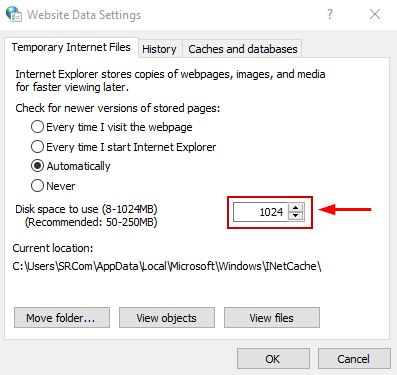
- Click OK to save the changes and exit the settings.
- Now, open, save, or preview the Word documents to determine whether the error has disappeared or not.
6. Disable the preview feature for Microsoft Word.
Disabling the preview for Microsoft Word requires you to delete a specific registry subkey from the registry editor. This will fix the ‘Word could not create the work file’ issue; however, make sure to back up your registry settings in case something goes wrong. Incorrect registry settings can lead to many problems.
Anyway, here are the steps to disable the preview for MS Word:
- Open Run and hit Enter after typing: regedit
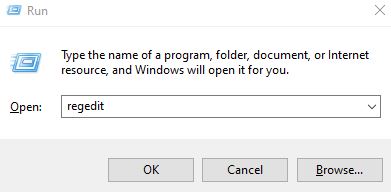
- Press Ctrl + F to open the search console.
- Click on Find Next after pasting the following subkey: HKCR\CLSID\{84F66100-FF7C-4fb4-B0C0-02CD7FB668FE}
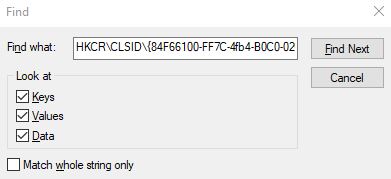
- Wait until the search is complete.
- Delete the subkey if found, and close the Registry Editor.
- Finally, restart your computer, and the Word files will open and save normally now. However, you’ll have to compromise on the preview option.
7. Change the value data of MS Word in the registry.
If the value data of AppData or Cache has been modified in the registry or entered incorrectly, the work file error will occur. Its value should be set correctly in order for Microsoft Word to function normally. For this method, we will once again utilize the Registry Editor to make the changes as follows:
- Open Run, and after typing “regedit,” hit OK.

- Click Yes on the next dialog box to open the Registry Editor.
- Enter the following address in the address bar: HKEY_CURRENT_USER\SOFTWARE\Microsoft\Windows\CurrentVersion\Explorer\User Shell Folders
- Now look for AppData and double-click on it.
- If its value date has been changed, then enter this: %USERPROFILE%\AppData\Roaming

- Similarly, double-click on Cache and make sure the value data is: %USERPROFILE%\AppData\Local\Microsoft\Windows\INetCache
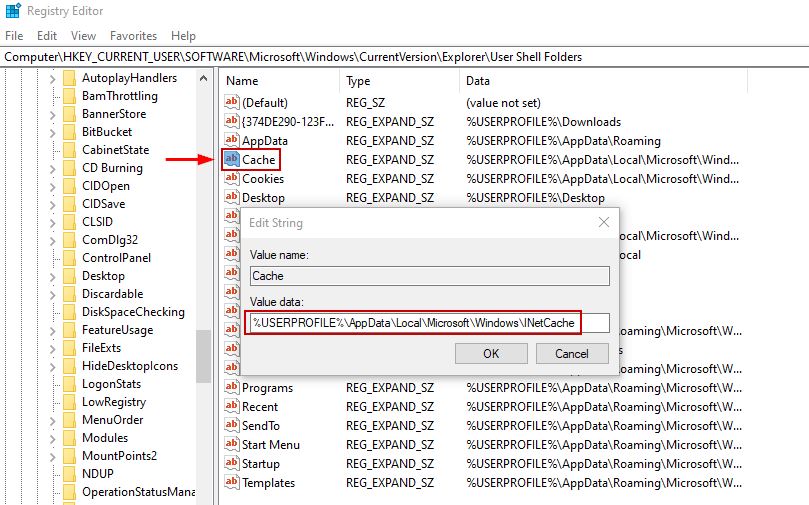
- Click OK and exit the Registry Editor.
- Lastly, restart your PC and check whether the error has been addressed.
8. Re-register the Word files.
Executing this method will re-register the Word files and fix the issues related to them. Once the registration is done, you will be able to work with the Word documents without any issues. Secondly, this is not a time-consuming process and will only take a minute or two.
- Press Win + R to open Run.
- In the Open: box, type: winword.exe /r

- Wait for the registration to complete, and start working on Word conventionally like before.





